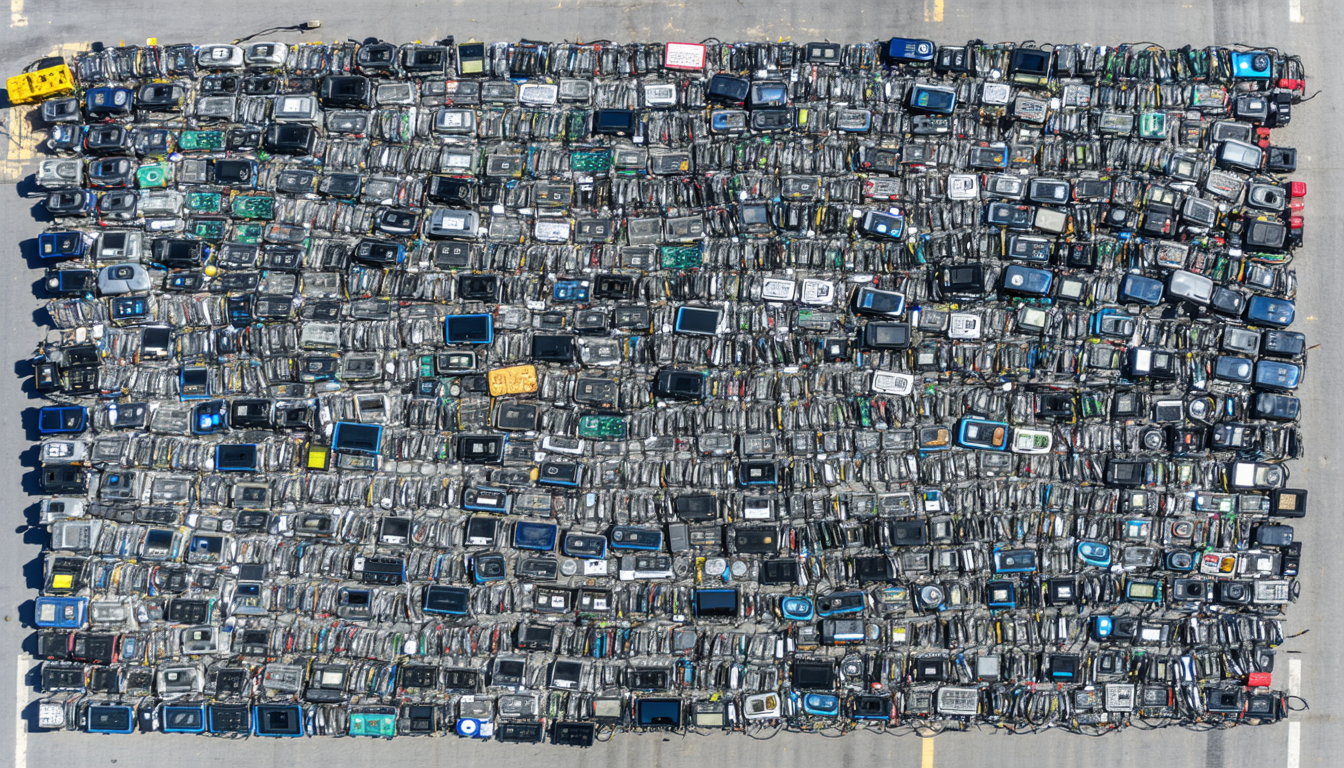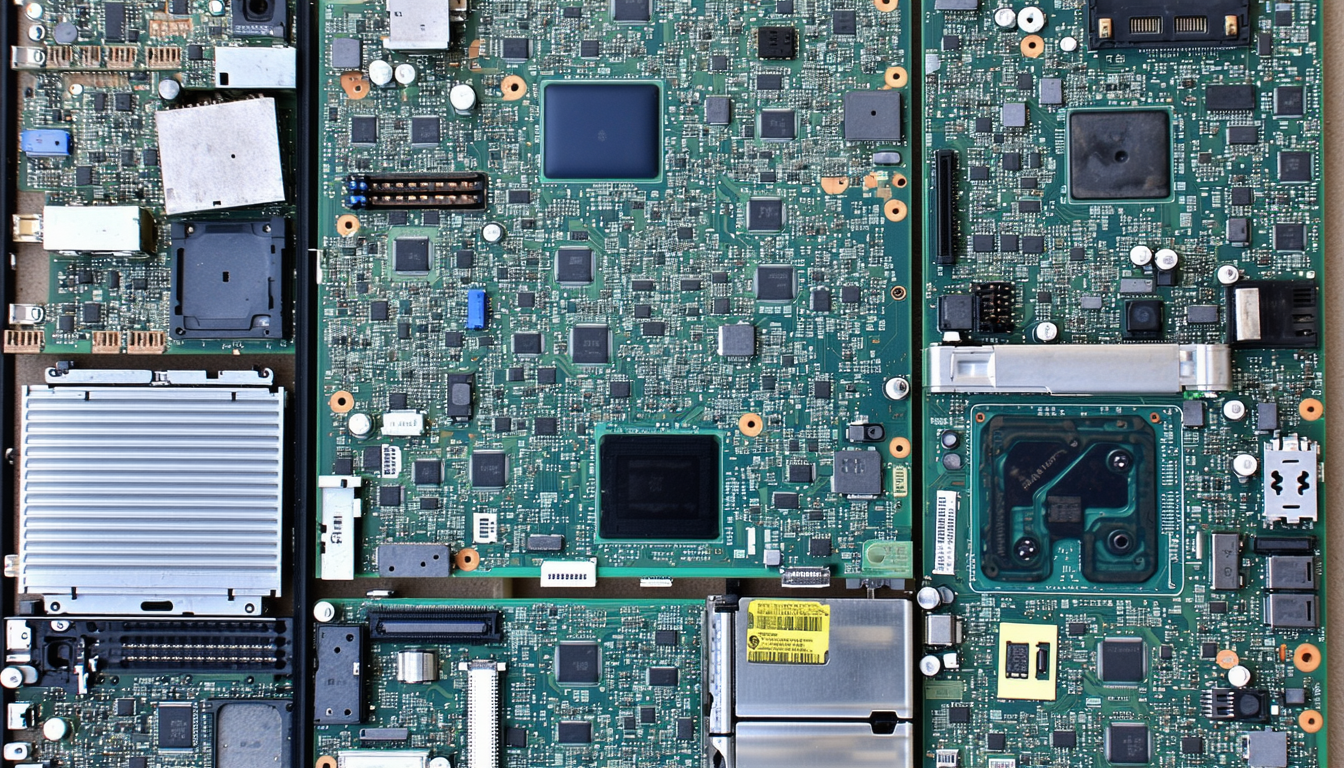Introduction
Electronic waste, or e-waste, is a growing environmental concern in the United States as technology advances and devices become obsolete at an alarming rate. From outdated smartphones to broken refrigerators, the list of e-waste items continues to expand, posing challenges for proper disposal and recycling. This article explores the most common e-waste items, their impact on the environment, and the importance of responsible management. With millions of tons of electronic waste generated annually, understanding these items is crucial for consumers, businesses, and policymakers aiming to reduce ecological harm.
Understanding E-Waste in the United States
E-waste refers to discarded electronic devices or components that are no longer functional or desired. In the U.S., the Environmental Protection Agency (EPA) estimates that over 2.5 million tons of e-waste were generated in 2020 alone, with only about 38% being recycled. The rest often ends up in landfills, releasing toxic substances like lead and mercury into the environment. This growing problem underscores the need to identify and manage e-waste effectively.
The improper disposal of electronics not only harms ecosystems but also wastes valuable materials like gold, copper, and rare earth metals. As technology consumption rises, so does the urgency to address this issue through awareness and action.
Common Items on the List of E-Waste Items
A wide range of products fall under the category of e-waste. Recognizing these items is the first step toward responsible disposal. Below is a detailed list of common e-waste items found in American households and businesses:
- Smartphones and Tablets: With frequent upgrades, millions of mobile devices are discarded yearly.
- Computers and Laptops: Obsolete hardware often ends up as e-waste due to rapid technological advancements.
- Televisions and Monitors: Older CRT models and even modern flat screens contribute significantly to e-waste.
- Printers and Scanners: These office staples are frequently replaced due to malfunctions or outdated features.
- Household Appliances: Microwaves, refrigerators, and air conditioners contain electronic components that qualify as e-waste.
- Batteries: Rechargeable and single-use batteries pose risks if not recycled properly.
- Cables and Accessories: Chargers, earphones, and other peripherals add to the growing pile of electronic waste.
This list of e-waste items highlights the diversity of electronics requiring specialized handling to prevent environmental damage.
Impact on Stakeholders
The accumulation of e-waste affects various groups, from individual consumers to large corporations. For households, improper disposal can lead to fines in states with strict e-waste laws, such as California, where specific regulations mandate recycling. Businesses face reputational risks if they fail to adopt sustainable practices, while recyclers struggle with the high costs of processing complex materials.
According to Dr. Emily Carter, an environmental scientist at Stanford University, “The challenge lies in creating accessible recycling programs for all Americans. Without infrastructure, even well-meaning individuals contribute to landfill overflow.” Her statement emphasizes the shared responsibility among stakeholders to tackle this issue.
Current Efforts and Challenges
In recent years, federal and state governments have introduced initiatives to manage e-waste. As of 2023, 25 states have enacted e-waste recycling laws, though enforcement varies widely. Programs like the EPA’s Sustainable Materials Management encourage manufacturers to design products with end-of-life recycling in mind. However, challenges persist due to inconsistent regulations and limited public awareness.
Another hurdle is the export of e-waste to developing countries, where lax environmental standards lead to health hazards for workers. Addressing these gaps requires coordinated efforts between policymakers, industry leaders, and communities.
Future Implications and Solutions
The future of e-waste management in the U.S. hinges on innovation and education. Emerging technologies, such as automated recycling systems, could improve material recovery rates. Additionally, consumer education campaigns can promote responsible disposal habits, reducing the volume of electronics sent to landfills.
On a broader scale, adopting a circular economy model—where products are reused or repurposed—could minimize waste. While opinions differ on whether government mandates or voluntary corporate initiatives are more effective, a balanced approach likely offers the best path forward.
Conclusion
The list of e-waste items in the United States encompasses everyday gadgets like smartphones and larger appliances like refrigerators, all of which pose significant environmental risks if mishandled. With millions of tons generated annually, the need for effective recycling and disposal systems has never been greater. By raising awareness, supporting legislative efforts, and embracing sustainable practices, Americans can mitigate the impact of e-waste. The journey toward a cleaner future starts with understanding what constitutes electronic waste and taking action to manage it responsibly.
Frequently Asked Questions (FAQ)
1. What qualifies as e-waste?
E-waste includes any discarded electronic device or component, such as phones, computers, TVs, and household appliances with electronic parts.
2. How can I dispose of e-waste safely in the U.S.?
Many states offer designated recycling centers or drop-off locations for e-waste. Check local regulations or visit the EPA website for resources near you.
3. Why is recycling e-waste important?
Recycling prevents toxic substances from leaching into soil and water while conserving valuable materials like metals for reuse.
4. Are there penalties for improper e-waste disposal?
Yes, some states impose fines for illegally dumping e-waste. Always follow local guidelines to avoid penalties.
5. How much e-waste is recycled in the U.S.?
According to recent data, only about 38% of e-waste generated annually is recycled, highlighting a significant gap in management practices.


